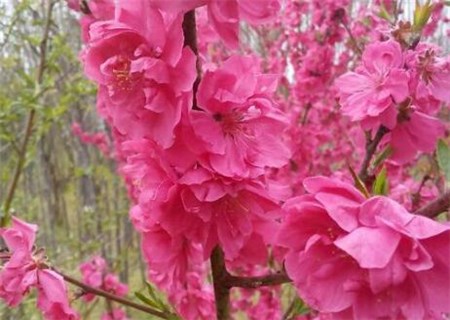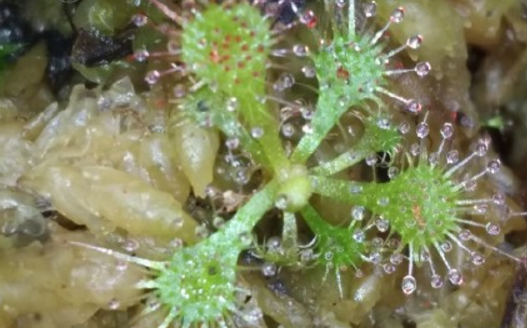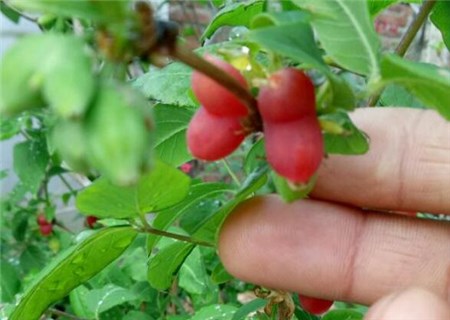When does Li Yake Bitao blossom? What are the common diseases and insect pests and their control methods? Can the peaches on the tree be eaten?
Green peach is a variety of peach, belonging to the ornamental peach blossom semidouble and double varieties, collectively known as blue peach. The flowering period of green peach in East China is from March to April, with plump flowers, bright colors and many flower patterns. So do you know when the peach blossoms? What are the common diseases and insect pests and their control methods? Can the peaches on the tree be eaten? According to the understanding of people who grow green peach, the flowering period of blue peach: the flowering period of green peach in East China is from March to April.

1. Common diseases and insect pests of Bitao and their control methods
1. Aphids
The eggs overwintered in the axils and cracks of the branch buds of Bipao, and began to hatch when they bloomed in the early spring of the next year, clustered on the buds and sucked sap, the aphids reproduced quickly, and the damage was the most serious in late May. The damaged leaves curled and shrunk to the back, affecting the growth of strips, and the aphids in clusters excreted a large amount of honeydew, polluted the shoots and leaves, and reduced the ornamental value.
Prevention and control methods:
Reasonable fertilization and less nitrogen fertilizer to ensure the healthy growth of the plant. Pay attention to protecting natural enemies such as ladybugs, flower bugs, lacewings, etc. In serious cases, it can be controlled by insecticides, such as imidacloprid, dichlorvos, killing aphids, aldicarb and so on. Try to choose low toxic insecticides such as imidacloprid and acetamiprid.
2. Small green leafhopper
The main harm is that the adults and nymphs suck the leaf juice, the affected leaves begin to appear yellow-white spots, the spots gradually expand into pieces, and the leaves lose green. Leafhoppers are the most harmful from July to September.
Prevention and control methods:
Clean up the dead branches and leaves in autumn and winter, burn them centrally and eliminate the overwintering adults. Spraying 20% cicada powder or 10% imidacloprid wettable powder 2500 times in time during the peak incubation period of nymphs can achieve better results. Spray 4.5% cypermethrin 1500 times when it occurs in large quantities.
3. Red spider
It mainly harms the leaves, stems and flowers of Bipao, and sucks the sap of plants. In the early stage, there are a large number of needle-sized yellow-brown spots on the front of the leaves, but in the later stage, a large number of leaves lose green, yellow, curl and fall off, resulting in a large number of fallen leaves. Red spiders reproduce rapidly and do serious harm in high temperature and arid climate.
Prevention and control methods:
Strengthen management, enhance tree potential, reasonable pruning, increase ventilation and light transmittance, and timely watering during drought. When tree buds sprout, spray Baume 0.5 degree to 1 degree stone sulfur mixture to control newly hatched larvae. In the event of a major occurrence, 1800 times of triclofenol or 1000 times of thiophanate methyl wettable powder can be sprayed. Once every 10 days, the effect is better.
4. Pear heart borer
The worm is not deep, generally drilled to 2 cm to 4 cm away from the tip, the tip is often eaten by larvae, often glue and droop.
Prevention and control methods:
Remove the weeds around the green peach plant, scrape the warped skin from the tree trunk, and destroy the overwintering larvae. It was found that the tender shoots shrunk in May and June, and they were cut off and burned in time. Medicament control can use 10% cypermethrin 2000 times or 1.8% avermectin 3000 to 4000 times or fenitrothion 1000 times to spray shoots two or three times to kill larvae.
5. Red-necked longicorn beetles
The larvae overwintered in the host branches, and the adults in Hebei Province emerged from mid-July to mid-August and laid eggs in the epithelial gap of the branches. the hatched larvae ate the phloem and eroded to the xylem after overwintering. The cavities are generally from top to bottom, flat, wide and irregular.
Prevention and control methods:
During the peak period of Eclosion, the adults can be artificially captured and killed. During the xylem larval stage, 50% phoxim EC was used for wormhole injection or 5% imidacloprid EC was used for trunk hole injection, and then the hole was sealed with mud.
6. Jinsuke Peach Ball
Nymphs and female adults cluster on branches or leaves to suck sap, resulting in weak growth or withered branches and leaves. Once the insect occurs, it spreads rapidly and grows densely on branches and tree trunks.
Prevention and control methods:
The insect body was brushed away manually in spring, and the branches with insects were cut off. In the first ten days of May, Jie Shenjing 800 times solution was sprayed to kill the female adult. In the middle of June, the nymph was sprayed with phoxim 1000 times solution during the hatching period, and the effect was remarkable.
Can the peaches on the peach tree be eaten
The fruit of the green peach is edible, because it is non-toxic and harmless, but its size is not flattering, because the fruit of the green peach tree is too small to be eaten and is often used as an ornamental.
Green peach itself is actually a variety of peach, strictly speaking, it is a plum genus of Rosaceae, which is mostly used in parks, communities and other human activities to do beautification and practical environment. Generally, green peaches come from artificial cultivation, and the common cultivated varieties are Baibi peach, blue peach, red green peach, and pink and white sprinkled golden peach on the same plant, the same flower and even the same petal.
Time: 2019-03-16 Click:
- Prev

The breeding methods and matters needing attention of pig cage grass paste vegetables? Sowing method? What are the effects and effects?
Thatched vegetable, also known as thatched grass, so the breeding methods and points for attention of thatched vegetable? Sowing method? What are the effects and effects? According to the data, maojingcai is a plant that likes Shenzhen in relatively humid places, and waterside or moist meadows are places where it often grows. Maogao vegetable is rich in color.
- Next

How to plant honeysuckle fruit? Was it good? What is the nutritional value and efficacy?
Bifurcated quat fruit, also known as fitness fruit, Acacia fruit, because of its small edible basically can not feel a kernel, so also known as seedless bifurcation fruit, seedless cherry, deeply loved by people. So do you know how to grow loquat fruit? Was it good? What is the nutritional value and efficacy? How to plant loquat fruit
Related
- Fuxing push coffee new agricultural production and marketing class: lack of small-scale processing plants
- Jujube rice field leisure farm deep ploughing Yilan for five years to create a space for organic food and play
- Nongyu Farm-A trial of organic papaya for brave women with advanced technology
- Four points for attention in the prevention and control of diseases and insect pests of edible fungi
- How to add nutrient solution to Edible Fungi
- Is there any good way to control edible fungus mites?
- Open Inoculation Technology of Edible Fungi
- Is there any clever way to use fertilizer for edible fungus in winter?
- What agents are used to kill the pathogens of edible fungi in the mushroom shed?
- Rapid drying of Edible Fungi

